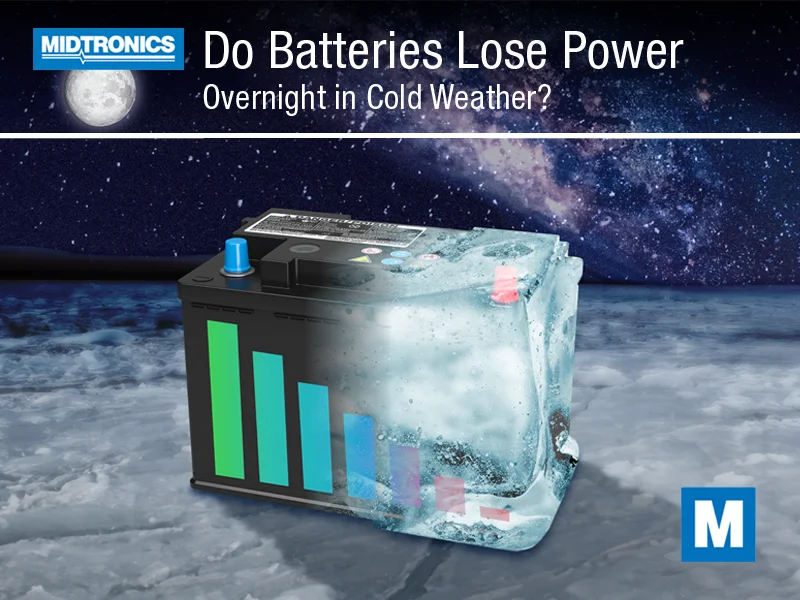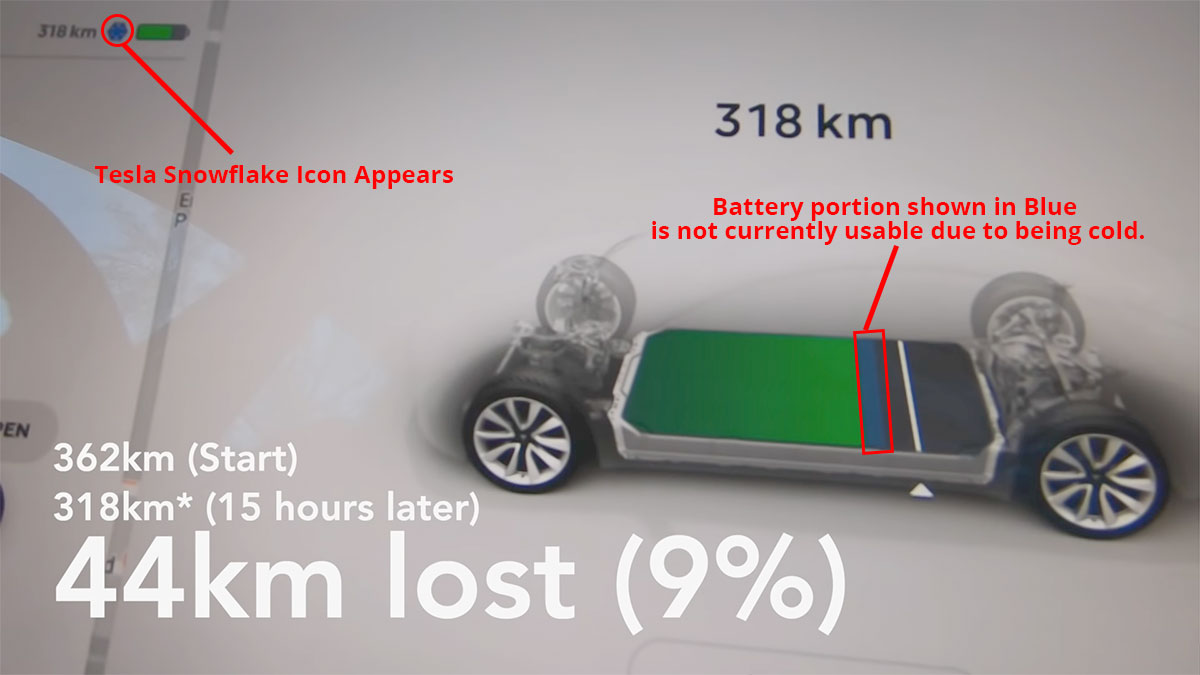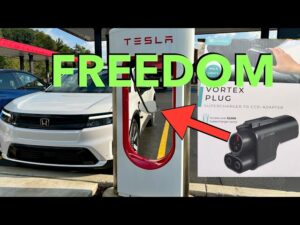Imagine waking up in the morning, ready to hit the road with your Tesla, only to find your battery has drained more than expected overnight. You might wonder, “How much battery does a Tesla lose overnight?”
This is a common concern among Tesla owners, and you’re not alone in seeking answers. Understanding this can help you maximize your electric vehicle’s efficiency and ensure you start each day with the power you need. As you delve into this article, you’ll uncover the surprising factors that contribute to battery loss, practical tips to minimize it, and expert insights to keep your Tesla running smoothly.
Stick around to discover how you can wake up every morning with your Tesla charged and ready to go, just as you expect it to be.

Credit: www.torquenews.com
Tesla Battery Basics
Tesla vehicles usually lose about 1-3% of battery charge overnight. Factors like temperature and software updates can affect this. Parking in a garage can help minimize battery drainage.
Tesla Battery Basics Understanding how much battery a Tesla loses overnight begins with grasping the fundamentals of Tesla’s battery technology. Tesla’s innovative batteries are not just about powering a car; they’re about efficiency, sustainability, and cutting-edge technology. They are designed to offer long-range capabilities and maintain charge over extended periods.Types Of Tesla Batteries
Tesla offers different types of batteries across its various models. The most common are the lithium-ion batteries, known for their high energy density and long life. Tesla’s Model S, Model X, and Model 3, for example, utilize these batteries, each tailored for optimal performance in their specific model. There are also the newer LFP (Lithium Iron Phosphate) batteries, which Tesla has started using in some models. These batteries are known for their safety and lower cost, although they typically have a lower energy density compared to lithium-ion variants. Choosing the right battery type can impact how much energy your Tesla might lose overnight.Battery Capacity And Efficiency
Battery capacity is essentially the amount of energy a battery can store. Tesla’s batteries range from 50 kWh in some Model 3 variants to over 100 kWh in the Model S Plaid. This capacity directly influences how far you can drive on a single charge and how much energy might dissipate when not in use. Efficiency is another critical aspect. Tesla’s batteries are engineered for minimal energy loss. However, they can still lose a small percentage of charge due to factors like temperature changes or the car’s onboard systems using power even when the vehicle is idle. Typically, you might observe a 1-2% loss overnight, but this can vary based on external conditions. Have you ever noticed your phone’s battery draining a bit overnight? Your Tesla is no different, though far more advanced. Understanding these basic elements can help you better manage your Tesla’s battery and ensure you’re always ready for the next drive. What steps will you take to optimize your Tesla’s battery efficiency?
Credit: www.midtronics.com
Factors Affecting Overnight Battery Loss
When you wake up to a fully charged Tesla, only to find it slightly less charged than when you left it, it’s natural to wonder why. Several factors can influence how much battery your Tesla loses overnight. Understanding these factors can help you manage your vehicle’s energy more efficiently. Let’s explore the main elements affecting overnight battery loss.
Temperature Impact
Ever notice your Tesla’s battery status fluctuating with the weather? Temperature plays a crucial role in battery performance. Cold temperatures can cause your battery to lose more charge overnight, as energy is used to maintain optimal battery temperature. In contrast, warmer climates might see less energy consumption. You might need to adjust your parking habits during extreme weather conditions to minimize loss.
Software Updates
Did you know software updates can affect battery usage? Tesla frequently releases updates to improve performance and security. These updates might require more energy initially, causing a slight overnight battery drain. Think of it as your car’s way of keeping itself in peak condition. Staying informed about update schedules can help you anticipate any temporary battery fluctuations.
Battery Age
Is your Tesla feeling a bit older? Battery age is a significant factor in energy retention. As your Tesla’s battery ages, its ability to hold charge diminishes. This is a natural process, much like how our phones seem to need charging more frequently over time. Regular maintenance and mindful usage can help prolong your battery life. How do you plan to keep your battery in top shape as the years go by?
By understanding these factors, you can better manage your Tesla’s battery life. Consider how these elements impact your daily routine. Are there strategies you can implement to minimize battery loss overnight? Your Tesla is an investment, and taking small steps to optimize its battery usage can pay off in the long run.
Typical Battery Drain Scenarios
Understanding how much battery your Tesla loses overnight can be a critical factor in planning your daily commutes and long trips. Different situations can lead to varying levels of battery drain. Let’s explore some typical scenarios to help you manage your Tesla’s battery life effectively.
Urban Vs. Rural Settings
Living in an urban area might mean your Tesla is constantly pinging nearby networks and devices, which can contribute to a slight battery drain. In contrast, a rural setting usually involves fewer devices and networks, potentially leading to less drain.
Imagine parking in a quiet, countryside town versus a bustling city. The energy your Tesla spends on staying connected in these environments can differ significantly. Where do you park most often?
High Vs. Low Usage Patterns
Your daily usage habits can also impact how much battery you lose overnight. If you use your Tesla frequently throughout the day, the battery might naturally drain more by the evening, even without additional usage at night.
On the other hand, if your car mostly stays parked with minimal usage, you might see less overnight drain. Think about your driving patterns. Are you a frequent driver or more of an occasional user?
Monitoring these patterns can help you understand your Tesla’s battery behavior better. Adjust your charging habits accordingly to keep your battery healthy and ready for your lifestyle.

Credit: insideevs.com
Mitigating Battery Drain
Tesla cars typically lose around 1-2% of battery overnight. Factors like temperature and settings can affect this rate. Keeping the car plugged in can help reduce battery drain.
Mitigating battery drain in your Tesla overnight can be a critical aspect of ensuring your vehicle is always ready to hit the road with maximum efficiency. While it’s common for electric vehicles to experience some battery loss when parked, understanding and implementing strategies to mitigate this can save you both time and energy. Let’s explore some practical approaches you can take to minimize this overnight drain and keep your Tesla in top condition.Optimal Charging Practices
Charging your Tesla isn’t just about plugging it in whenever you find an outlet. Timing and setting are everything. It’s crucial to charge your vehicle during off-peak hours when electricity rates are lower, usually during nighttime. Set your Tesla to charge up to 80% instead of 100% daily. This practice helps in maintaining battery health and reducing energy loss. Have you tried setting your charge limit through the Tesla app? It’s a simple but effective tool for managing battery longevity.Use Of Energy Saving Modes
Tesla offers various energy-saving modes designed to minimize battery consumption when the vehicle is idle. Activating the energy-saving mode can significantly reduce the overnight battery drain. The vehicle goes into a low power state, switching off unnecessary systems until you’re ready to drive again. Consider turning off the ‘Always Connected’ feature if your Tesla remains stationary for extended periods. It might seem minor, but it can add up in battery savings. Have you noticed how much longer your phone battery lasts when you switch off background apps? The principle is similar here. Adopting these simple yet effective practices can make a noticeable difference. How much battery are you saving overnight with these tweaks? It’s a question worth considering as you optimize your Tesla experience.Real-world Case Studies
Understanding Tesla’s battery loss overnight is crucial for owners. Real-world experiences provide insights into what to expect. These case studies reveal how Tesla performs in various conditions. Explore owner stories and comparative data to learn more.
Owner Experiences
Tesla owners often share their battery loss observations. On average, they report a loss of 1-3% overnight. Factors like weather and car settings influence these results. Cold weather can increase battery drain. Owners suggest reducing this by using energy-saving modes.
Some Tesla owners have seen minimal loss. They park indoors and use scheduled charging. This strategy helps maintain battery levels efficiently. Sharing these experiences helps new owners manage their Tesla effectively.
Comparative Analysis
Comparing Tesla models reveals interesting insights. The Model 3 and Model S show different overnight losses. Model 3 tends to lose less battery, often 1-2%. The Model S may lose slightly more due to its design.
External factors impact these comparisons. Weather, parking location, and software updates play a role. Newer models often have improved battery management systems. These systems help reduce overnight loss significantly.
Understanding these differences assists potential buyers. It enables them to make informed decisions about their Tesla purchase.
Future Of Tesla Battery Technology
The future of Tesla battery technology looks promising. With constant innovations, Tesla aims to improve battery efficiency. The focus is on reducing overnight battery loss. This is crucial for Tesla owners who want maximum performance.
Innovations In Energy Storage
Tesla invests heavily in energy storage technologies. Advanced materials are used to enhance battery life. New designs aim to minimize energy loss. These innovations help in storing more power. Efficient energy storage means less overnight drain. Tesla’s commitment to research ensures continuous improvements.
Impact On Overnight Efficiency
Improved battery technology has a direct impact on overnight efficiency. Better energy storage reduces power loss. Tesla’s focus is on delivering cars that retain charge longer. Efficient batteries mean less worry for owners. Overnight efficiency is a key aspect of Tesla’s strategy. It helps in building trust with users.
Frequently Asked Questions
How Much Battery Will A Tesla Lose Overnight?
Tesla typically loses 1-3% battery overnight due to systems running in the background. This is normal. Climate conditions and software settings can affect this rate. Adjust settings to minimize battery loss. Always ensure your Tesla is in “Sleep Mode” for optimal battery preservation overnight.
How Much Car Battery Drain Is Normal Overnight?
A normal car battery drain overnight is about 0. 01 to 0. 02 volts. Ensure all lights and electronics are off to prevent excessive drain. If the battery drains more than this, it may indicate a problem. Regular checks help maintain battery health and extend lifespan.
What Happens If My Tesla Gets To 0?
Your Tesla will stop moving when it reaches 0% battery. Drive cautiously to a safe location. Recharge as soon as possible to avoid potential damage. Use roadside assistance if necessary. Regularly monitor battery levels to prevent reaching 0%.
Is It Okay To Leave A Tesla At 100% Overnight?
Leaving a Tesla at 100% overnight is not ideal. Regularly charging to 80-90% extends battery life. High charge levels can degrade the battery over time. Tesla recommends keeping the battery’s state of charge between 20% and 90% for optimal performance.
Use scheduled charging to manage battery health.
Conclusion
Understanding Tesla’s overnight battery loss is important. It helps in managing your car’s range. Most Teslas lose a small percentage of battery overnight. Factors like temperature and software settings affect this. By adjusting settings, you can reduce this loss. A little planning goes a long way.
Monitor your battery regularly. Make sure it’s charged before long trips. Keep your Tesla software up to date. This ensures optimal performance. Knowing how your Tesla’s battery behaves overnight saves you stress. It also enhances your driving experience. Stay informed, and enjoy your Tesla rides with confidence.


